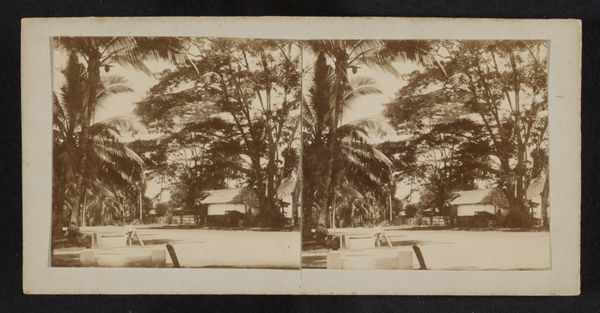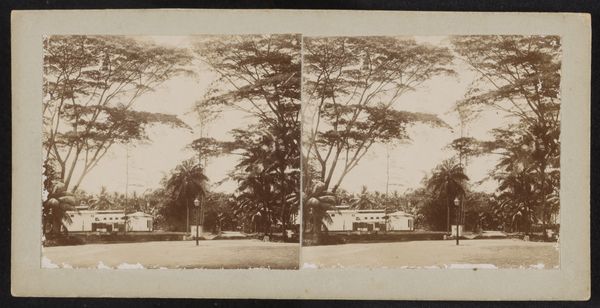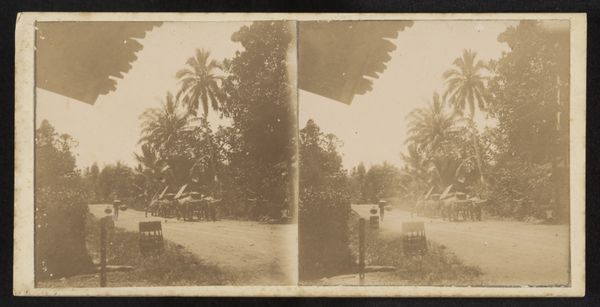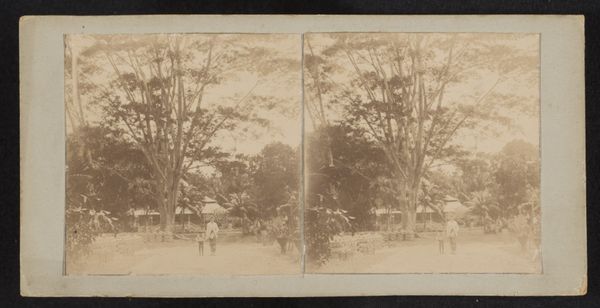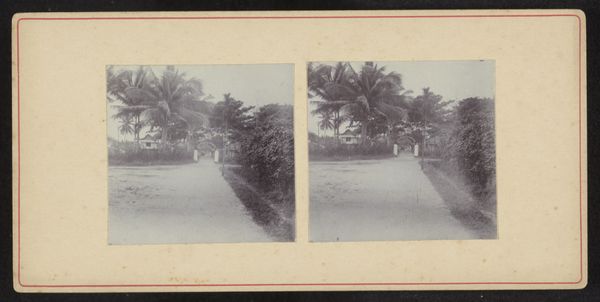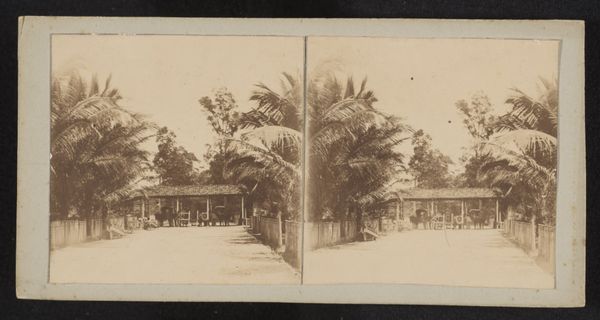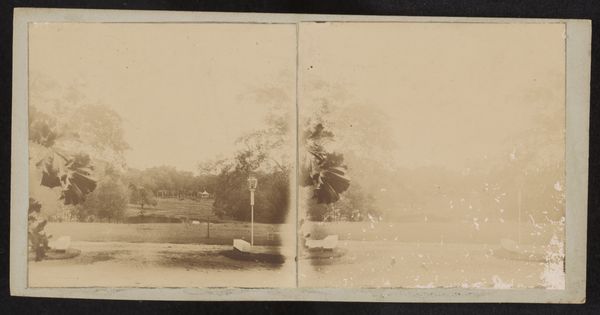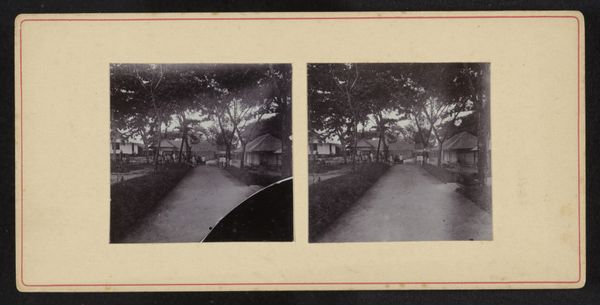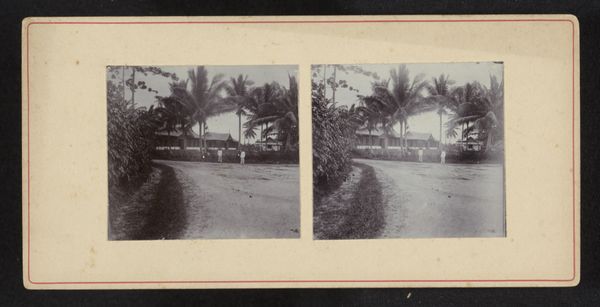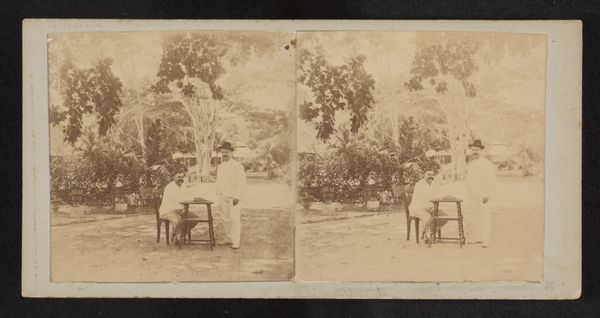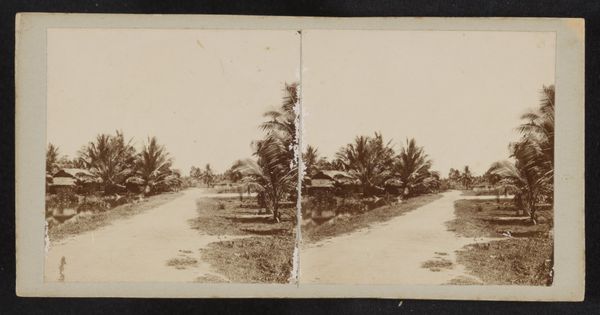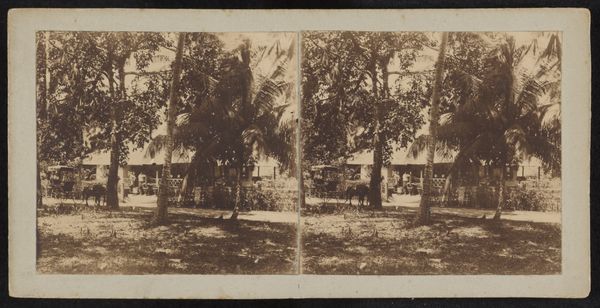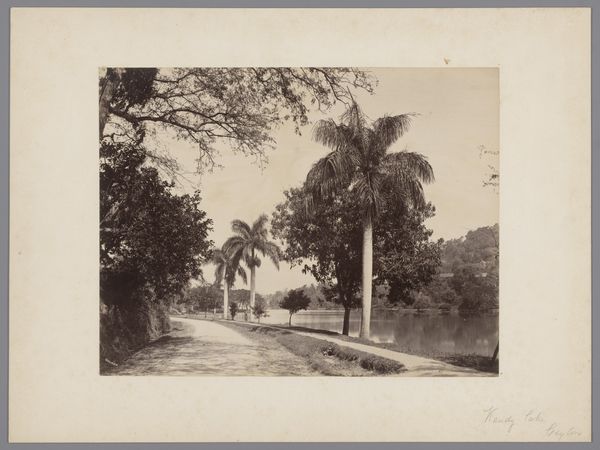
photography
#
landscape
#
photography
#
orientalism
Dimensions: height 80 mm, width 80 mm, height 88 mm, width 178 mm
Copyright: Rijks Museum: Open Domain
Editor: Here we have a photographic landscape, "Gezicht te Soengeiliat," taken sometime between 1900 and 1922 by Robert Julius Boers. It's currently held at the Rijksmuseum. I'm struck by its sepia tones, giving it such a nostalgic feel, almost dreamlike. What layers of historical context do you see within this image? Curator: This photograph invites us to consider the politics of representation during the Dutch colonial era. The carefully composed scene—lush vegetation, neat buildings—promotes an image of tranquility and order. It subtly reinforces a colonial narrative of European control bringing civilization to the region. Editor: So, you're saying that it's more than just a landscape; it's a constructed representation? Curator: Precisely. Think about who likely commissioned or purchased this image. Was it intended for local consumption, or was it aimed at a European audience? How does this idyllic view obscure the realities of colonial power structures and resource extraction that underpinned Dutch rule in that period? Editor: It definitely makes me think about how the image is framed. I hadn't considered the possibility that what's intentionally *not* shown is as important as what *is* shown. What should a viewer keep in mind when considering such colonial era depictions of the east? Curator: Always question the viewpoint presented. Who benefits from this portrayal? Look beyond the surface beauty and ask what realities are being suppressed or ignored. Understanding the historical context empowers us to deconstruct these images and understand their role in shaping perceptions. Editor: Thank you. It’s given me a lot to think about. I see the photo in a different light now, understanding the visual narratives of colonialism. Curator: And hopefully a deeper appreciation for how photographs like this reflect the complex interplay between art, power, and history.
Comments
No comments
Be the first to comment and join the conversation on the ultimate creative platform.
